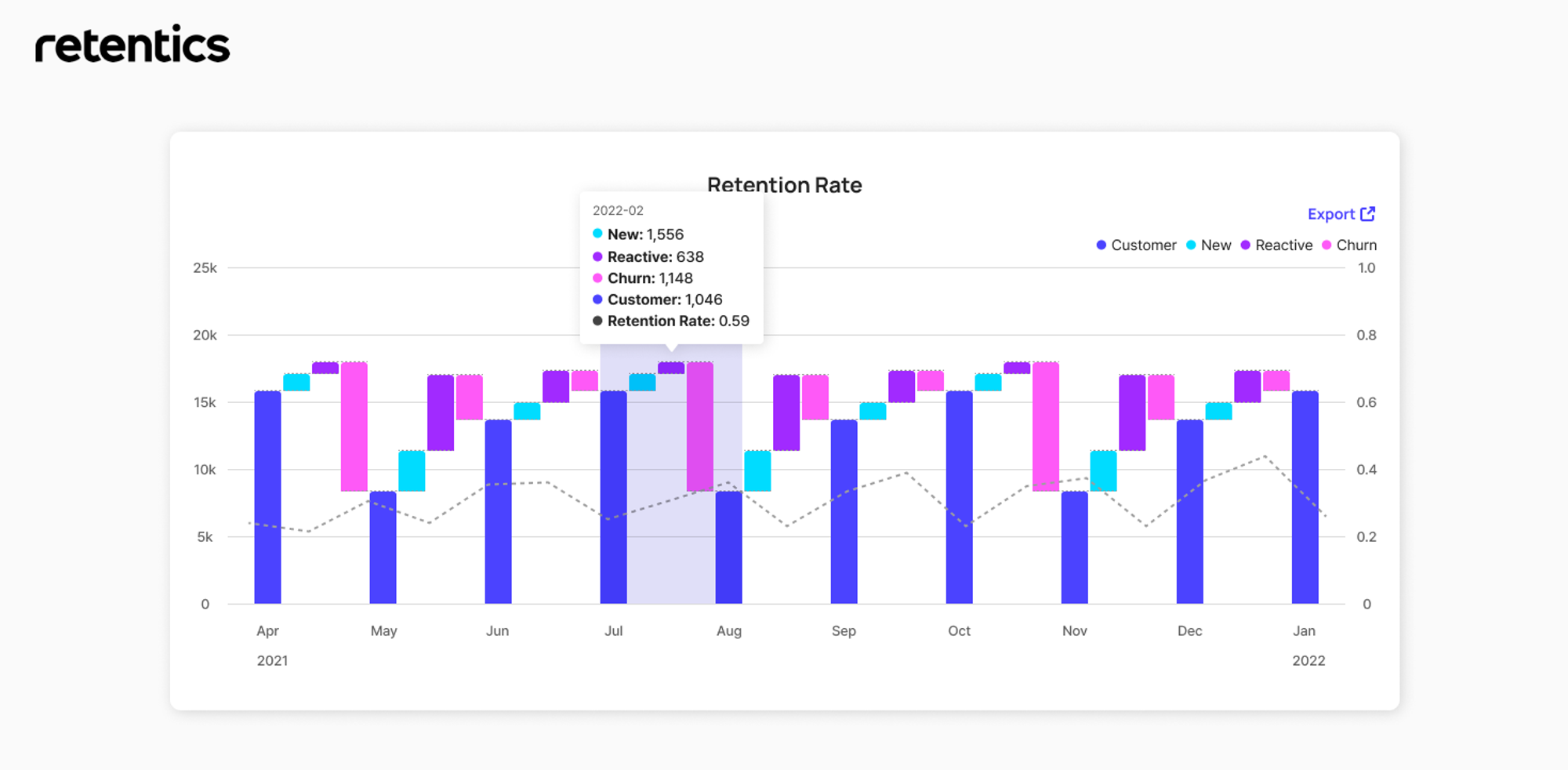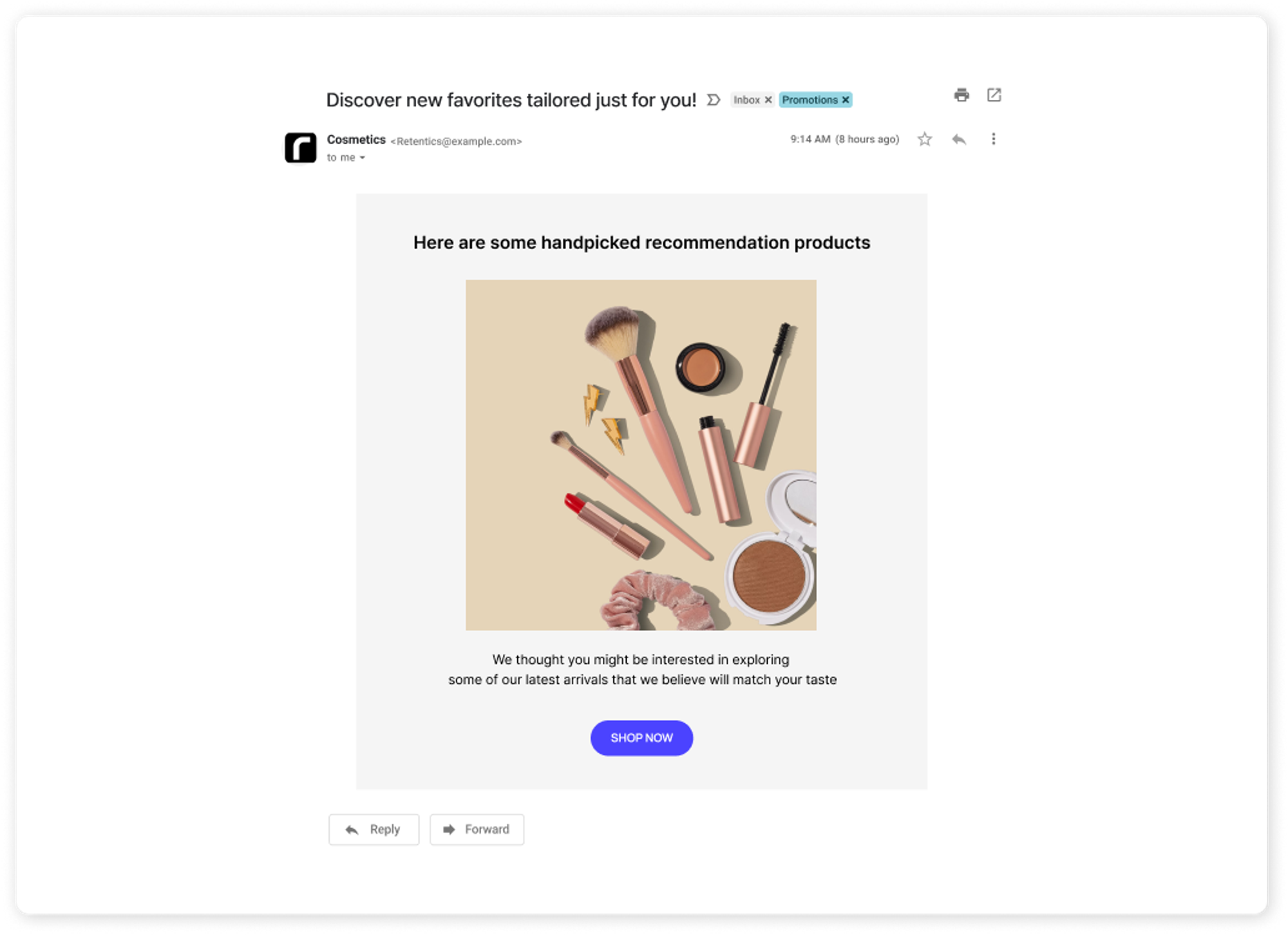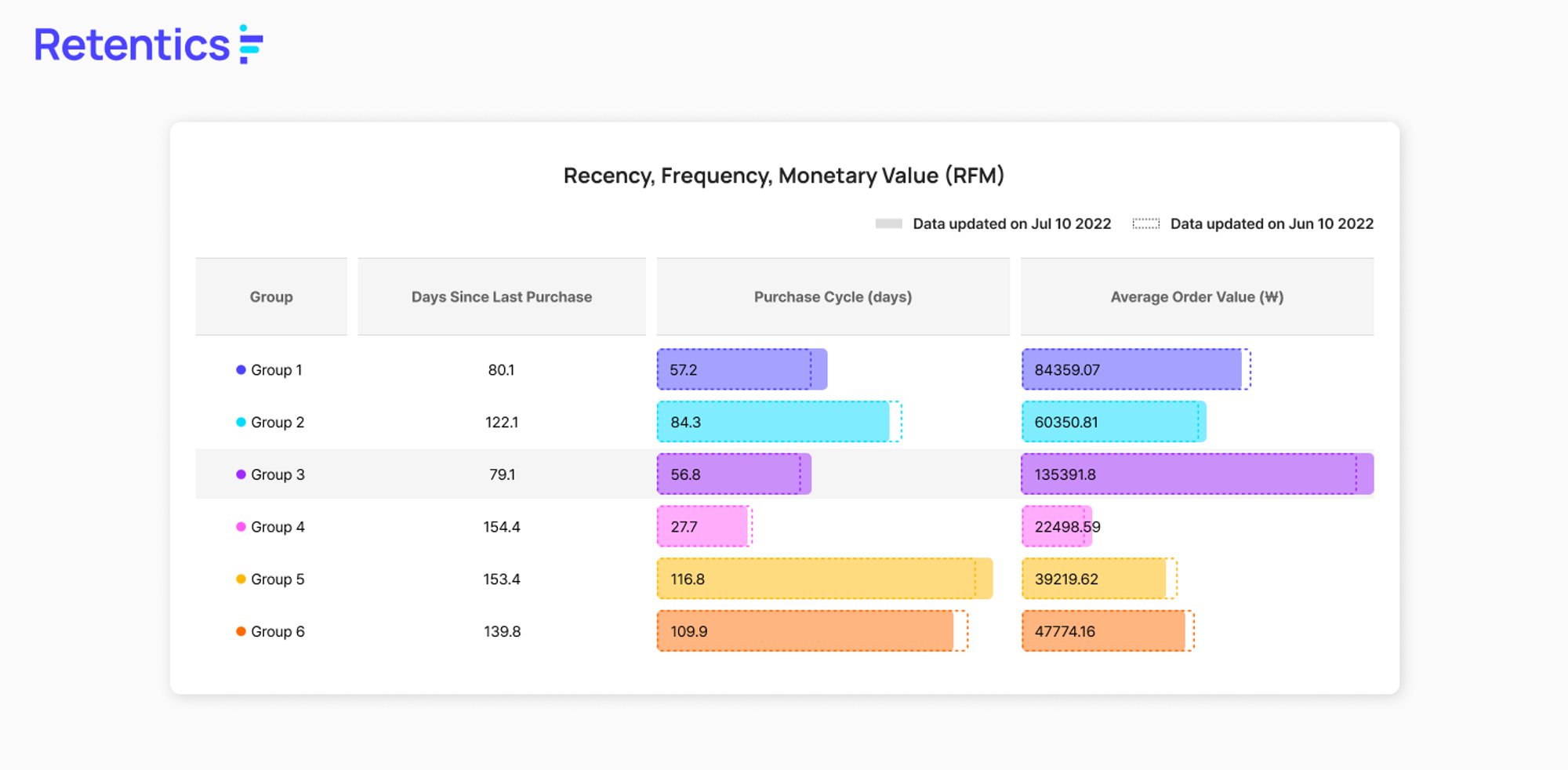Top Strategies for boosting customer repeat purchase on E-commerce
Customer retention is one of the core objectives of every business. However, to achieve this, it is essential to maintain a strong relationship with customers and engage them with strategic methods that spark their interest.
Nov 09, 2023
Contents
1. What is CRM and Customer Retention?What is CRM?What is the relationship between CRM and Customer Retention?
2. Why is customer retention essential in today's time?3. What Affects Customer Churn Rate?4. How CRM helps in customer retention?a. Providing Personalized Contentb. Encouraging Customer Engagementc. Automating Processesd. Customer segmentation5. Top Strategies for boosting customer retention on E-commerceTake advantage of email channelsData-Driven Loyalty Program1. What is CRM and Customer Retention?
What is CRM?
CRM, or Customer Relationship Management, refers to the strategies, practices, and technologies that companies use to manage and analyze customer interactions and data throughout the customer lifecycle. The aim is to improve business relationships with customers, assist in customer retention, and drive sales growth. CRM systems compile data from a range of different communication channels, including a company's website, telephone, email, live chat, marketing materials, and social media. By collecting insights from these data sources, CRM software allows businesses to learn more about their target audiences and how to best cater to their needs, thus fostering a better understanding of customers and improved service delivery.
CRM tools provide a multifaceted platform where all information about customer preferences, history, and engagement is stored. This system supports the aggregation and organization of customer data which can drastically improve the effectiveness of marketing campaigns, sales strategies, and customer service efforts. It also assists sales representatives by providing detailed records of past interactions and purchases, which can guide future sales pitches and interactions.
Marketers rely heavily on CRM software to fine-tune their marketing efforts, using customer data to tailor their advertising campaigns. The insights gained from CRM systems help marketers understand customer behavior and preferences, allowing for more effective targeting and personalization of marketing messages. This enhanced targeting not only increases customer engagement but also drives sales productivity and helps in customer acquisition.
CRM is especially critical for small and midsize businesses, which can benefit from a centralized hub for audience data. This centralization aids in efficiently organizing customer data and gaining valuable insights which can lead to informed decisions about where to allocate resources for marketing and sales efforts. CRM systems empower businesses of all sizes to build stronger customer relationships, improve customer loyalty, and achieve a higher return on investment for their marketing and sales activities. The importance of CRM in growing and maintaining a competitive edge in the marketplace cannot be overstated, as it plays a vital role in the sustainability and expansion of businesses.
What is the relationship between CRM and Customer Retention?
The relationship between CRM and customer retention is significantly intertwined. In the competitive business landscape today, consumers are seeking brands through personalized ads that address their needs. They have numerous options for where to spend their money, but they will remain loyal to the brand that convinces them the most effectively.
Acquiring new customers is challenging, but retaining existing ones is comparatively easier, especially with the aid of CRM software. CRM enhances access to customer data, allowing brands to adjust their business and marketing strategies to retain customers and increase the overall customer Lifetime Value (LTV).
Customer retention is crucial for maintaining a consistent revenue stream, while new customer acquisition is key for achieving growth objectives. To sustain competition, strategies must be devised to prevent customer attrition and to acquire new ones. Repeat customers constitute a significant part of any business. Consumers who have had a satisfactory experience are more likely to make future purchases.
CRM systems play a pivotal role by storing customer behavior and purchase history data, which can be used for personalized email campaigns, customer satisfaction surveys, social media engagement, customer segmentation, and more. These systems allow for the creation of personalized offers and promotions, regular updates on orders and product launches, managing customer support follow-ups, and offering rewards to loyal customers, all contributing to an increased likelihood of repeat purchases and customer retention.
By leveraging the data and insights managed through CRM, businesses can enhance customer satisfaction and loyalty, which in turn contributes to customer retention. High customer satisfaction and loyalty lead to greater opportunities for additional sales or upselling, and ultimately a higher Return on Investment (ROI) from existing customers as it eliminates the need for additional marketing expenditures for these customers.
2. Why is customer retention essential in today's time?
Customer retention is crucial in the current business ecosystem for several reasons. First and foremost, retained customers represent a predictable and stable revenue stream. Unlike new customers, who are costly to acquire and whose purchasing behavior is uncertain, repeat customers have already demonstrated a willingness to purchase from a brand and are likely to continue doing so. This behavior reduces the overall cost of sales, as the marketing investment required to attract a new customer is significantly higher than that to retain an existing one.
Furthermore, loyal customers tend to spend more over time, increasing the Customer Lifetime Value (CLV), which is a key metric for assessing the profitability of a company's relationship with its customers. They are more familiar with the brand's product or service offerings and, assuming their experiences have been positive, are more open to exploring additional purchases. This openness also extends to responsiveness to upselling and cross-selling efforts, which are crucial strategies for increasing the average transaction value.
Another benefit of customer retention is the generation of word-of-mouth marketing. Satisfied customers are likely to recommend a brand to friends and family, which can lead to new customer acquisitions without any direct marketing costs. These organic endorsements are particularly valuable because prospective customers tend to trust personal recommendations more than traditional advertising.
Customer feedback is another advantage of having a base of loyal customers. Repeat customers can provide insightful feedback because they are familiar with the brand and have a vested interest in the improvement of products or services. This information can be invaluable for guiding product development, customer service improvements, and overall business strategy.
Finally, in a competitive market, customer retention is a sign of brand strength and customer satisfaction, both of which are essential for long-term success. Companies that excel in retaining customers often have a strong competitive advantage, as high customer churn can be a vulnerability, especially in industries where the competition for customers is fierce.
In essence, customer retention not only provides a firm foundation on which a business can stabilize its earnings and plan for growth but also serves as a catalyst for organic expansion through referrals, larger customer spend, and valuable market insights. The role of CRM in customer retention is to streamline and enhance the processes that support these outcomes, providing a structured and data-driven approach to fostering and managing customer relationships.
3. What Affects Customer Churn Rate?
Customer churn rate, a critical metric in e-commerce, reflects the proportion of customers who discontinue their relationship with a company over a specific period. Various factors, both within the control of the business and outside it, can influence this rate significantly.

Product Quality: Product quality is a leading factor affecting churn. Customers expect their purchases to be as advertised. When product quality fails to meet expectations, disappointment ensues, leading to customers abandoning the brand for competitors that deliver higher-quality options.
Customer Service: Customer service excellence can foster loyalty, whereas poor service can drive customers away. Immediate and helpful support, transparent communication, and an easy purchasing process can reduce the churn rate, while neglect in these areas can escalate it.
Pricing: Competitive and fair pricing attracts and retains customers. When customers perceive pricing as unaffordable or not reflective of value, they may churn. Regular market analysis to adjust pricing can help maintain a customer base, while neglecting this can lead to a higher churn rate.
Brand Reputation: A strong brand that stands by its values and promises can cultivate a loyal customer base. Negative public perception, often resulting from unresolved complaints or public relations issues, can increase churn rates as customers seek brands with better reputations.
Customer Experience: The overall customer experience, from browsing and purchasing to delivery and post-purchase support, is paramount. A seamless, personalized, and pleasant experience can minimize churn, while a disjointed or frustrating one can increase it.
Payment Issues: Simplified and secure payment processes encourage repeat business. Complicated checkout processes or frequent payment failures can result in higher churn rates.
Omnichannel Presence: Consumers expect a seamless omnichannel experience. Inconsistencies across channels can confuse and frustrate customers, potentially increasing churn rates. Integration of services and touchpoints is key to reducing friction.
Feedback and Engagement: Actively seeking and responding to customer feedback demonstrates that a company values its customers’ opinions and is committed to improvement. Lack of engagement can lead to a sense of neglect, prompting customers to leave.
Incentives and Loyalty Programs: Loyalty programs and incentives can encourage repeat purchases. When customers are rewarded for their loyalty, they are more likely to stick around. Without these programs, customers may feel there’s no benefit to remaining with a brand.
Market Dynamics: Lastly, the broader market dynamics, including competitor actions and economic factors, affect churn. Brands must remain agile and responsive to these external influences to maintain customer loyalty.
In conclusion, customer churn rate is influenced by a multitude of factors ranging from the quality of the product and service provided to pricing strategies and overall market conditions. Businesses that succeed in managing these elements effectively often enjoy lower churn rates and higher customer loyalty.
4. How CRM helps in customer retention?
Customer retention is one of the core objectives of every business. However, to achieve this, it is essential to maintain a strong relationship with customers and engage them with strategic methods that spark their interest. This is where Customer Relationship Management (CRM) plays a significant role. CRM is a fantastic tool that aids in managing relationships with customers and understanding their needs and preferences.
a. Providing Personalized Content
With CRM, you have collected and analyzed data from a customer named Jane. You found out that Jane is in her 30s, lives in a dry climate region, and has previously purchased moisturizing products from your range. She also opened an email about a blog post on 'Best Skincare Routines for Dry Skin.'
Using this information, you can create personalized content specifically for Jane. For instance, you could send her an email with a subject line, "Jane, beat the dryness with our special skincare regimen!". The email could contain a curated list of moisturizing skincare products, tips for skincare in dry weather, and a discount code for her next purchase.
This personalized approach makes Jane feel valued as a customer. She is more likely to be interested in the content of the email because it resonates with her specific needs and preferences. It also encourages her to continue purchasing your products, increasing her loyalty to your brand.
Jane's case is just one example; imagine if you could do this for each customer, the impact on customer retention would be significant. This is the power of using CRM to provide personalized content for customer retention.
b. Encouraging Customer Engagement
Through CRM, we can understand customer behavior patterns and formulate appropriate engagement strategies accordingly. It's crucial to continually engage customers through various methods such as email marketing, social media campaigns, events, and more. This allows customers to maintain their relationship with us, which ultimately contributes to customer retention.
c. Automating Processes
By automating some processes through CRM, we can provide efficient customer service. This enables customers to receive quick and accurate responses, which helps enhance customer satisfaction. Additionally, it allows us to save time and effort so we can focus on other important tasks.
d. Customer segmentation
CRM allows businesses to categorize customers based on various criteria such as purchase history, demographics, and behavior. This enables companies to target specific customer groups with tailored marketing campaigns and services, thereby increasing the chances of customer retention.
let's consider a condensed version of the example. You're running an online bookstore and use CRM to segment your customers. One group, "College Students", frequently buys textbooks at the start of each semester. Using this insight, you create a targeted marketing campaign offering discounts on textbooks during this period. This tailored approach increases engagement and customer retention within this specific group. This method can be replicated for other customer segments based on data from your CRM.
5. Top Strategies for boosting customer retention on E-commerce
The success of an e-commerce business is heavily reliant on customer retention. It's not enough to satisfy customers with a single purchase; we need strategies to ensure that they continue to choose our products.
Take advantage of email channels
Maintaining regular contact is crucial to prevent customers from being swayed by competitors. An effective tool for this is Customer Relationship Management (CRM) email marketing.
Most businesses typically use emails to share newsletters related to new product launches or updates about orders, right? While it's important to deliver useful information and updates about our service, the key to customer retention goes beyond that.
The core of customer retention is to provide appropriate coupons when customers need our products. The method of sending discount codes when customers have shown interest in a product but have not yet purchased is no longer a progressive approach. Now, you need to find items that the customer is likely to enjoy and propose that you've specially prepared them. How do you do that?
The answer lies in the customer's purchase data. By utilizing advanced artificial intelligence technology to analyze customer purchase data, and based on our customers' purchasing item journeys, you can recommend the items that are most likely to be purchased next.
By effectively utilizing CRM email marketing, we can not only maintain continuous contact with our customers but also provide value that makes them want to continue using our service. This strategic approach to email contact can significantly improve customer retention, thereby guaranteeing the continued success of e-commerce business.

Data-Driven Loyalty Program
With the intensification of 3rd party regulations, the reliance on retargeting marketing has decreased, pushing businesses to make more effective use of their internally collected customer data. This data, which reveals customer preferences and purchasing patterns, is invaluable for delivering the most suitable marketing messages and offers to each customer.
Customer retention refers to the recurrence of customer purchases. It is heavily influenced by the quality of the product and the frequency of customer visits to the site. To encourage frequent visits, a variety of strategies are needed, one of which is the development of a loyalty program based on existing customer purchase data.
When designing a loyalty program, it's not enough to divide the ranks based on the number of purchases alone. It's crucial to understand the purchasing patterns of customers, such as how many items they purchase at once or how often they make purchases, to establish appropriate loyalty grade criteria.

For instance, if you were considering the introduction of a loyalty grading system, you could set the conditions for upgrading from a 'general customer group' to a 'bronze group' as 'purchasing three or more times in a month, or purchasing a total of over $500 in a month'. This criterion should be based on the purchasing patterns of customers.
By utilizing these loyalty grades, you can deliver marketing messages like, 'You are currently one purchase or $300 short of the amount needed to upgrade to the bronze group. If you upgrade to the bronze group, you can save $53 on this purchase.' Or, 'Customers in the bronze group are getting an average discount of $120.' Using psychological marketing tactics like these can lead to not only an increase in sales but also improved customer retention.
In addition to encouraging frequent visits to your website, you should also consider various ways to keep customers using your products. This could involve maintaining and improving product quality, improving customer service, collecting customer reviews and feedback, and reflecting this in product improvements.
In conclusion, to increase customer retention, it's essential to utilize customer data to plan marketing campaigns and develop strategies to encourage frequent site visits and continued use of your products.
Written by. Ssong kim, Julian Kim
Share article